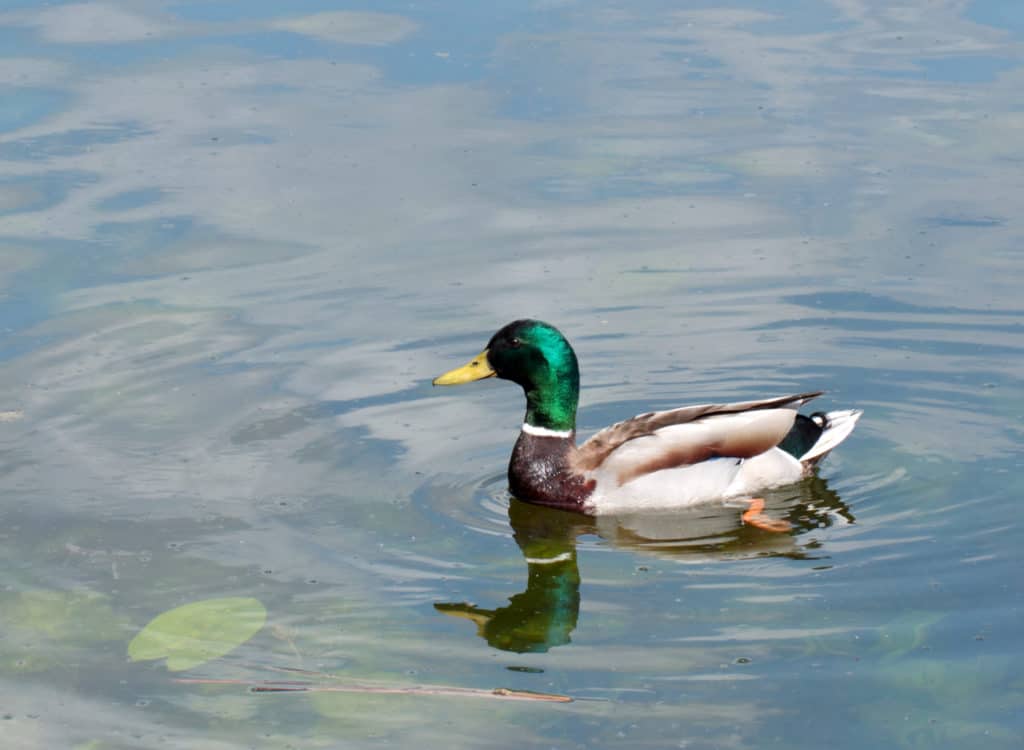Sporting Life

Waterfowl on the Bay
By Dennis Doyle
“A flock of mallards out front,” hissed our guide. The three of us in the blind simultaneously reached for our shotguns. You can always spot experience in a waterfowl hide; there is no abrupt motion. Even when intending to do things quickly, the actions are smooth and deliberate. Waterfowl have remarkably keen vision, especially for erratic or sudden movement.
We turned our heads slowly, keeping our faces angled down, though our eyes were frantically darting about, focusing out to the horizon, up and back, attempting to visually acquire the group of ducks tearing through the sky at 60 mph. One would think they would be obvious against an otherwise empty horizon. They’re not.
Finally Ernie whispered, “Two o’clock high, still out of range.” Then, just seconds later, Ross added, “Starting to lock up and come around.” Locking up is a term that means the birds have stopped beating their wings, holding them out cupped, horizontally rigid but dumping altitude, banking and sailing together toward a singular location—our decoy spread. We had stopped breathing awhile ago, at the first alert from our guide.
“Mind the hens. We don’t want them,” he added. For conservation reasons, the daily limit on mallards in recent years includes only one hen per gun. A hunting party could become handicapped the rest of the day if they quickly shot the collective limit.
Identifying male from female becomes critical, and in the heat of engaging a twisting, flaring and accelerating flock of alert ducks, distinguishing each by sex can prove difficult. Drake mallards, the more desirable duck, should be obvious from their bright color combinations but in the confusion of a shooting situation hens often get taken instead.
Something to remember, especially while hunting, is that our brain does not recognize negative terms during high stress moments. If your primary thought in rising from the blind and shouldering your firearm is “Don’t shoot a hen,” you are highly likely to select a hen out of the mix at the moment of truth. That’s just how it works.
Fixing your mind on a glossy green head, chestnut breast and bright grey belly or flank will more likely result in bringing the proper duck into your possession. Which is why it is important to know what kind of ducks are coming into your spread.
Still, we sometimes have to pass up shooting opportunities for want of certainty and legality. There are many publications that show detailed photos of both sexes of most species. And luckily, we also have the internet. There are countless videos of flocks of waterfowl in flight, at a distance and up close, identified by species and sex. If you watch enough of them, often enough, you’ll be able to notice the differences on the wing and at all ranges.
If you, your guide or a party member identify the distant ducks approaching as goldeneyes or whistlers, you’ll know to pick out a drake showing a lot of white on their wing and body; if they are canvasbacks, look for red heads and light grey bodies. If it’s a mix you’ll still be able to visualize a proper target at the right time … if you know your ducks.
Not all waterfowl species have strict limits for the hens but as a general conservation rule the female population is far more important for reproduction than the number of drakes. Plus, knowing beforehand exactly which ducks you want will allow you to focus sharper and shoot better.
The final moment that morning resulted in three drakes and one hen. Nobody is perfect.
Fishfinder:
The rockfish bite is as good as it’s going to get this season. Stripers have moved up into the rivers to ambush the descending baitfish and the Magothy, Severn and Chester are good places to start, particularly in evenings. Trolling small bucktails and spoons are a good tactic as is casting surface and swimming plugs, soft plastic jigs and drifting live baits. There are still some spot around but small perch are starting to tempt hungry rockfish as well. Chumming is still productive and fishing cut bait will get some takers as well. Surprisingly crabbing is still very good with fat jimmies enjoying a last bit of feeding up before they bury themselves in the mud for winter.
